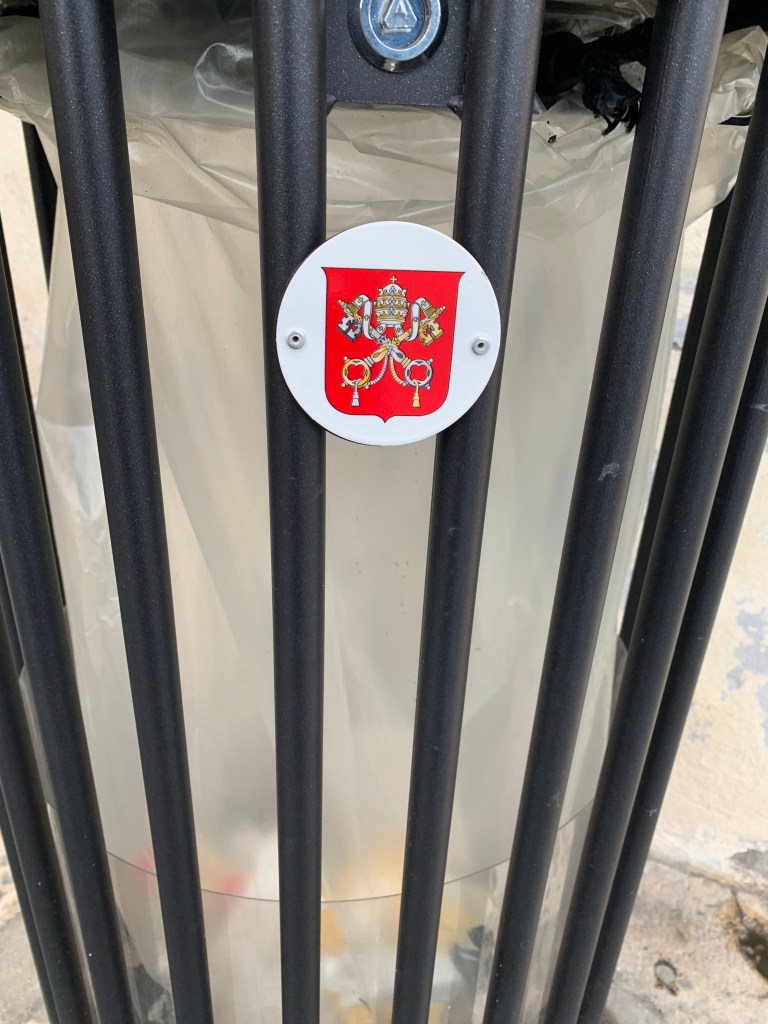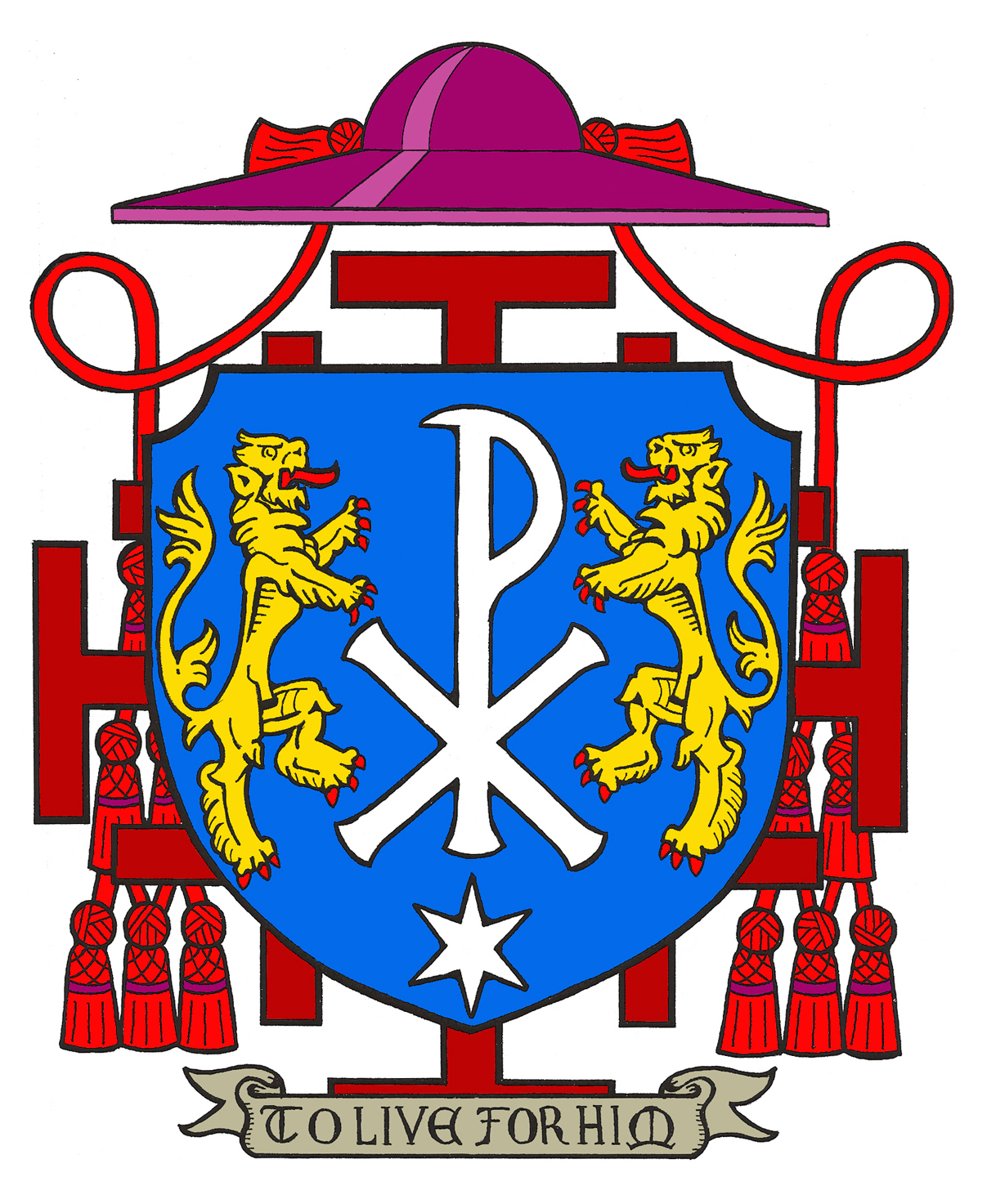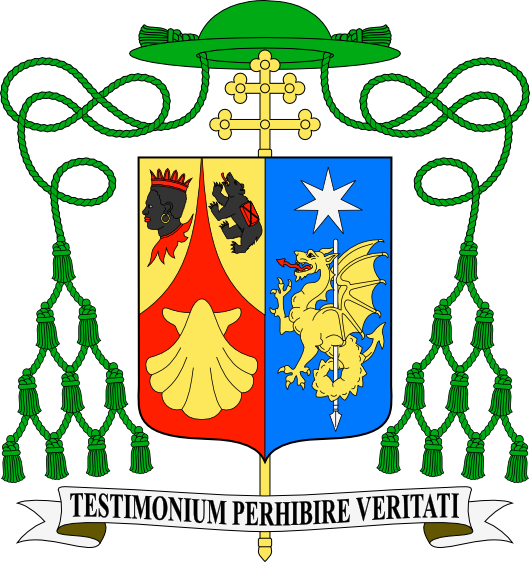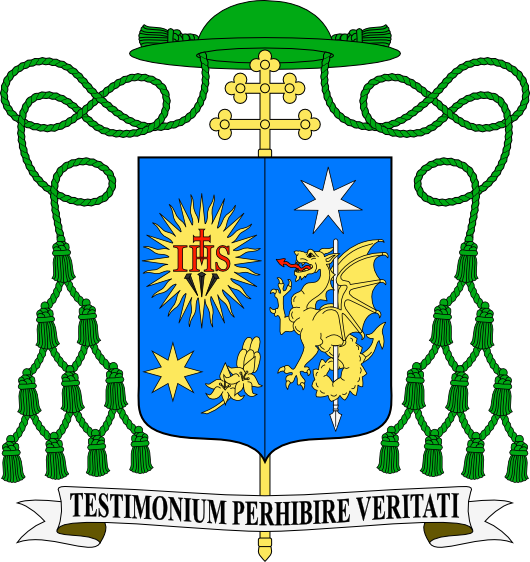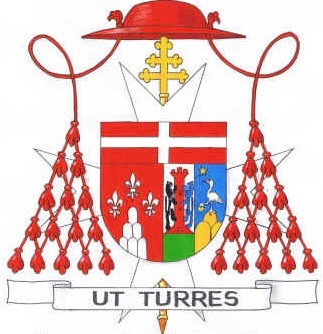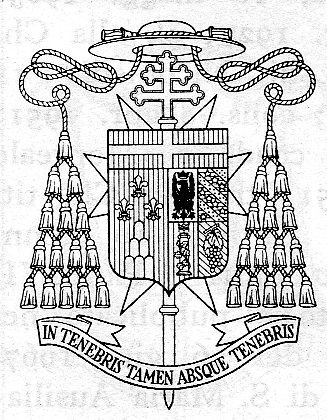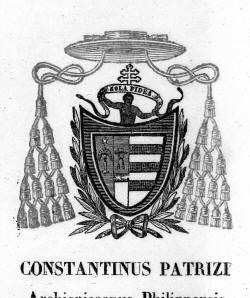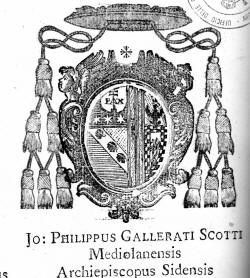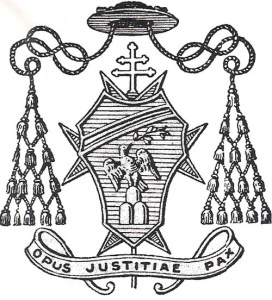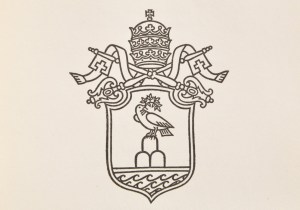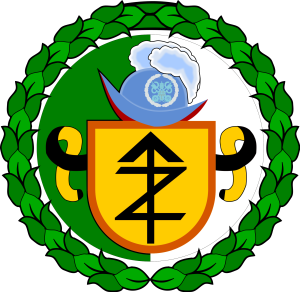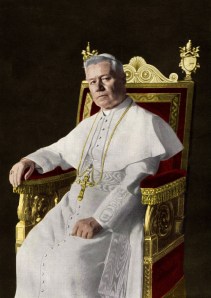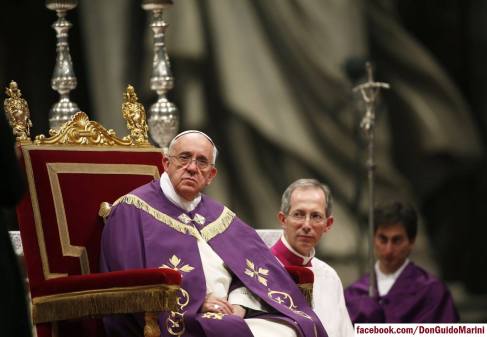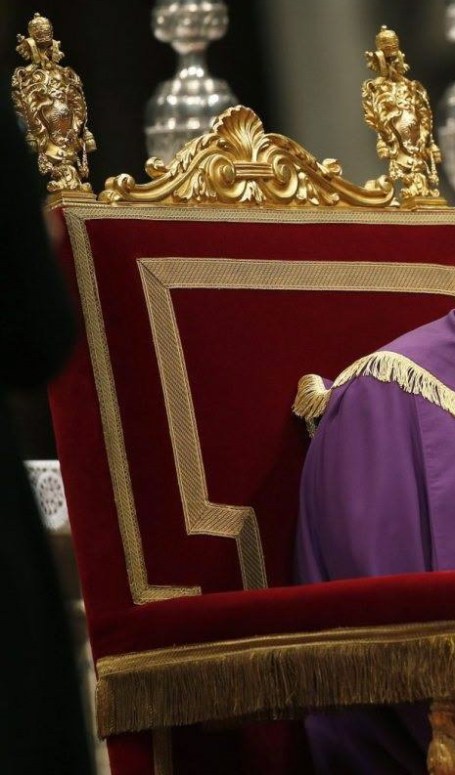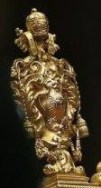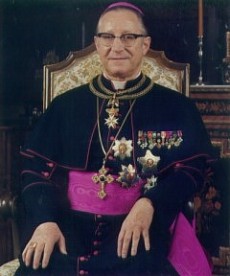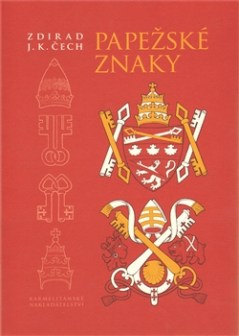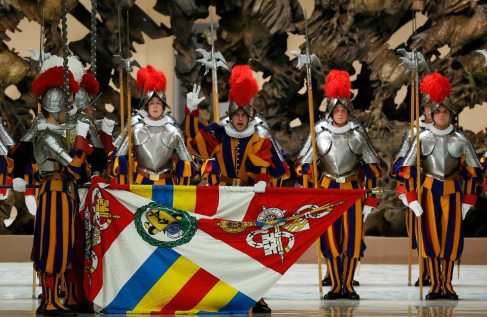Last May while I was vacationing in France I posted about saints who had been armigerous (i.e. who bore a coat of arms). On Sunday, April 27 there will be two more added to that number when Pope Francis canonizes his predecessors in the Chair of St. Peter, Pope John XXIII and Pope John Paul II.

The coat of arms of Pope John XXIII (above) was identical to the one he used as Patriarch of Venice with the addition of the external ornaments of a pope. The arms are: “Gules a fess Argent; in chief two fleur-de-lis Argent and overall a tower embattled Argent; on a chief Argent the lion of St. Mark Or”. The lower portion consists of the coat of arms that was adopted by Angelo Giuseppe Roncalli when he was named a bishop. Later, when he was promoted to Patriarch of Venice he added the chief (upper third of the shield) with the golden lion of St. Mark, the patron saint of the Venetian church, as is customary for all Patriarchs of Venice. This is one of the few examples in Italian Church heraldry where arms of the See are used. When he was stationed as Papal Nuncio to Paris, Roncalli had a young Bruno Heim serving as his secretary at the Paris Nunciature. The two shared an abiding interest in heraldry. At the time of his election to the papacy John XXIII was not in immediate touch with Heim who was serving elsewhere. John, himself an amateur heraldist approved his arms as they were with the Venetian lion included to be used as his papal coat of arms. A short time later he did employ his former secretary, Heim, to produce the artwork for the official version of the coat of arms. Heim tried to talk him out of retaining the chief of Venice in his papal arms but it was too late. So, it remained.
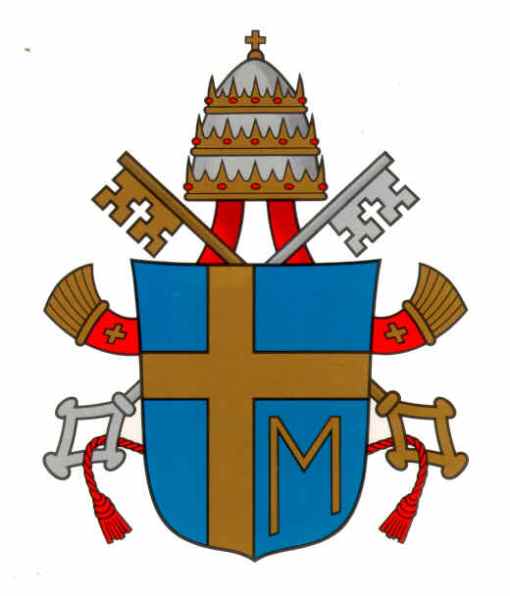
The coat of arms of Pope John Paul II (above) are also connected to the late Archbishop Heim. The arms are: “Azure a Latin cross skewed to dexter throughout Or; in sinister base the letter “M” Or”. These arms are also the ones adopted by Karol Wojtyła at the time he was made a bishop. However, in the earlier version the cross and “M” were black. On his election to the papacy Heim tried in vain to persuade the new pope to drop the letter “M” and replace it with another Marian symbol. The use of letters in heraldry is considered poor design. The new pope was adamant that his arms had to remain the same as those he had borne under a repressive Communist regime in order to show that he would not modify or weaken the stance he held as a bishop and cardinal in Poland. As a concession to good taste and design, however, so as not to have a color on a color he agreed to change the cross and “M” to gold on blue. Heim, who was afraid that his reputation as a knowledgeable expert in heraldry would suffer did his homework and then added an entire chapter to a second edition of his book, “Heraldry in the Catholic Church” on the use of what are called house markings, which resemble letters, as being particular to both Polish and Swiss heraldry (Heim was Swiss).
So, the age of saints is not long ago and distant but is with us right now. In addition, both of these down-to-earth men (John was the son of peasant farmers from Northern Italy and John Paul the son of a Polish civil servant) had coats of arms. Heraldry is often misunderstood as elitist, exclusive, snobbish and pretentious. Yet, these two men who were holy to a heroic degree such that they are now being held up as worthy of emulation by the faithful and who were known for their genuine humility each had a coat of arms.
Artwork: Bruno B. Heim

